Floating a couple of nymphs under an indicator is undeniably effective. In the right place and with the right conditions, flies under an indicator will outperform a tight line presentation all day long — all things have a moment to shine. But reaping the benefits of an indicator presentation takes some refinement of tactics. It’s not good enough to slap on whatever floatation device you dig up from the bottom of your chest pack. Matching the indicator with the weight to be suspended, finding a balance between the indicator and the weight of the flies (or split shot), is critical for getting the most from an indicator rig. And often, anglers choose indicators that are just too large.
There’s a heap of nymphing styles out there, but they can all be placed into two categories: tight line or indicator method. Tight line nymphing works, in part, because a skilled angler has exceptional control over the line and flies. Important too, a tight line setup is extremely sensitive. Sensitivity equals strike detection, and that puts more fish in the net.
When we add a strike indicator to the leader, we transfer control of the nymph’s downstream path to the indicator itself. The bobber (sorry, but that’s what it is) now does the work of leading the nymph through the drift and determining the maximum depth of the flies. By adding an indicator, we also transfer the sensitivity — the strike detection — over to the bobber. And if the indicator is sized properly — if it is balanced with the weight suspended underneath — it is exceptionally sensitive.
We can learn to read the indicator’s speed against the currents and even its rotation on the surface. Every movement of the indicator signals where the nymphs are and what they’re up to under the water. When the nymphs and weight are balanced with the indicator, and when the indicator is in touch with the flies, every bump on a rock, every stall in the pocket and every trout strike is visibly marked by the indicator. But the right balance is important.
A Balancing Act
The indicator dips, jiggles, rotates or dunks in response to the weight underneath. When the flies hesitate, the indicator pauses in turn (assuming there’s no slack from indicator to the weighted flies or split shot). The flies brush against some underwater vegetation, and the indicator stalls for a moment. A big trout grabs a nymph with conviction and the bobber dunks. Whatever the case, the indicator responds to the movements of the flies or the weight that carries them to the bottom.
More Like This
How much the indicator responds, though, is where a well balanced rig is important.
The trout that inhales the nymph and turns back upstream will always move the indicator. Such aggressive takes move even a poorly balanced rig. But most trout don’t feed that way. Our trout are fickle creatures. They often slide left a few inches and mouth a nymph as it passes, feeling it for a moment like an old man testing hot soup with his tongue. They might release the nymph without us ever detecting a strike. This happens no matter how good an angler you are and regardless of your chosen rig. But we can limit these lost detections by using as small of an indicator as possible. More specifically, we should choose the least buoyant indicator as is necessary to float the weight and the fly.
Picture this: A medium sized Thingamabobber suspends a single #16 tungsten beadhead nymph underneath. The bobber rides high, easily supporting the weight of the nymph. So easy, in fact, that the slight hesitations of our nymph bumping the bottom, or the soft take of a testy trout, may go unregistered. Essentially, the bobber has too much buoyancy in reserve. The bobber will move, but it may be so slight that we don’t detect it.
For contrast, now picture a small yarn indicator paired with two #12 tungsten beadhead nymphs. The yarn operates on the edge of being pulled under, and any slight hesitation, any trout taste-testing, moves the yarn visibly enough to be detected.
Too much buoyancy paired with a light payload of flies makes for an indicator that is resistant to subtle takes. It simply dips, jiggles and rotates less — it indicates less to the angler.
It’s important, then, to balance the buoyancy of the indicator with the weight underneath. Find that line where the buoyancy of the indy is overcome by the weight underneath, and then use an indicator that has a little more flotation in reserve.
Buoyancy and Indicator Types
Whether yarn, cork, foam or plastic, buoyancy is all about trapped air. It’s simple, really. More air floats more weight. The globe of a medium sized Thingamabobber houses more air than the same sized styrofoam indicator. The Thingamabobber is hollow, while a styrofoam indy is solid material with hollow pores.
That’s an important factor to remember when choosing an indicator to best match the flies and weight underneath. It’s not always about size — it’s about buoyancy.
Yarn indicators are extremely sensitive tools, and I like the ability to simply pull out strands of yarn or cut them down to a smaller size. I still prefer the simplest yarn system: a polypro macrame yarn attached with a small orthodontic rubber band, popularized by Pat Dorsey.
It’s worth mentioning that dry flies make excellent indicators. And when fishing dry-dropper, the same principles apply. Choose a dry fly that supports the weight of the flies (or split shot) underneath, but not much more, and your rig will be sensitive to the slightest takes.
All of this doesn’t have to be complicated, either. You can be only as refined as you feel is necessary, and I don’t recommend changing bobber size with every fly change.
I carry two sizes of Thingamabobbers, three sizes of yarn indys and a handful of dry flies that I use for dry-dropper. And I do my best to choose the indicator that balances best with the flies and weight underneath.
It makes a difference.

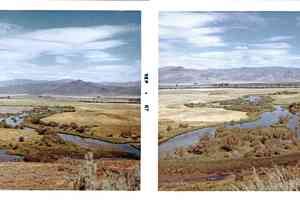




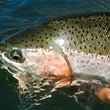

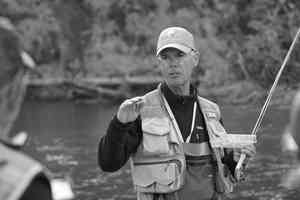





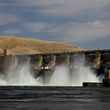


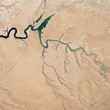



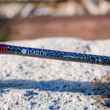
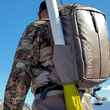
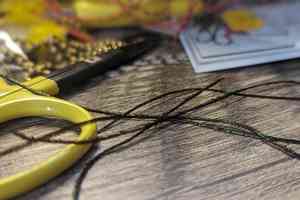
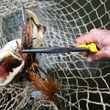
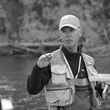
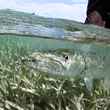
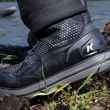

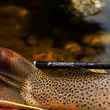

Comments
Bernie from Australia replied on Permalink
I must admit I have found indicator fishing a barely useful technique in the past. But after reading this I now understand much more clearly why that has been the case. It's so obvious that I had never even considered it. I just naturally thought that indicators did that withour taking fly size relative to indicator size (and hence buoyancy ) into account. A couple of questions though:
What about water speed/turbulence influences on this approach? At first glance still water, eg lakes, pools etc would be ideal but flowing water less so. Also on still water large indicators are often used as sails to move the fly though the water. Going small is going to eliminate this. Fishing at low light is also a prime time when indicators are used. So small means less visible. Alright if y,our are a young fisher, but not useful if you are older, eg 50 plus.
Otherwise a great piece and one I will start using
Thomas Doyle replied on Permalink
Well you have identified the problem however the solution is conspicuously absent. Have you developed a nymph size to bobber size chart?
The speed of the current affects what the useful bobber size will be also. More than once I have tossed what I thought would be an adequate size bobber into the river being fished only to not be able to see it because the current.
Pages